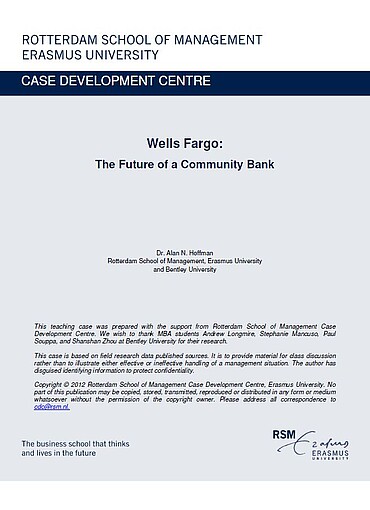Citation Note
based on Published sources; 19 pages
description
How can the US community bank Wells Fargo succeed in the increasingly regulated yet highly competitive banking industry? How can the company continue to employ its successful diversification strategy while reducing its exposure to new risks in the industry?
Abstract
Abstract: Wells Fargo, founded in San Francisco during the gold rush as a money delivery express, is now the fourth largest bank in the US and ranks number one in America’s deposit market share. It achieved initial success by being a trustworthy custodian of its customers’ wealth. By staying true to a customer-centric business model, it aims to fulfill all its customers’ needs and help them succeed financially. After establishing itself as one of the best community banks in the US, Wells Fargo has expanded internationally as a global bank. It has also significantly diversified offerings in order to gain market share. Because of a comprehensive range of products, Wells Fargo is exposed to increasing risks and competition. During the global financial crisis, it was negatively impacted due to its large exposure to bad loans through acquisition of Wachovia. Although the combination of advanced online banking technology and its massive physical network makes Wells Fargo stand out from its competitors, it remains challenging for the company to gain or maintain a leading position. If not managed properly, the diversifying strategy may, in the end, endanger Wells Fargo’s overall market share. The 2010 US financial reform legislation may limit growth potential for a large bank like Wells Fargo. How Wells Fargo can succeed in this increasingly regulated yet highly competitive industry is an open question.
usage
This case is written in a way that complex strategic decisions can easily be analyzed during limited classroom discussion time. Professors have commented that the case has worked well in their classrooms.
